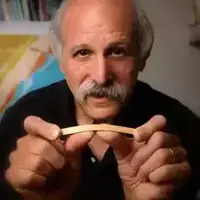Insights Into Pandemic Use of Online Teaching and Learning Mineral Identification Website and Value for Post-Pandemic Planning
Wednesday
1:35 PT / 2:35 MT / 3:35 CT / 4:35 ET
Online
Oral Session Part of
Oral Session I: Student Learning
Author
 Scott Brande, University of Alabama at Birmingham
Scott Brande, University of Alabama at Birmingham
The onset of the COVID-19 pandemic in early 2020 abruptly transported many teaching and learning environments from a traditional on-campus setting to virtual meetings online. The shift away from a campus classroom and the physical specimens for mineral (and rock) identification laboratory activities created immediate crises for many geoscience instructors. A critical need for online assets that could substitute for physical specimens drove individuals and organizations to seek out, aggregate and disseminate information about existing online resources, and to create webinars to share experiences, strategies, and to promote community connections.
One perspective into the national use of online resources for a mineral identification laboratory activity may be developed from my website omg.georockme.com which I first publicized at EER19 (pre-pandemic) and for which significant analytics (anonymized) are available. From Jan. 1, 2020 to March 2, 2021, some 28,000 users of omg.georockme.com are recorded, with over 534,000 page views. The geographic origins of user hits is highly unequal (not unexpectedly). Users came to omg.georockme.com via different pathways, including organic search, links publicized in forums, and word of mouth. Correspondence I received from colleagues, including those from previous Rendezvous meetings, confirms that personal connections are also an important pathway for the dissemination of information about these resources. Other analytics for user devices, operating systems, and browsers, illuminate interesting insights into student resources to which online assets are delivered.
Although the pandemic continues at this time (March 2021), plans at many universities are to re-open campuses for fall 2021 instruction. Critical needs for online resources for geoscience education will likely not stop with the diminishment of the pandemic. Discussions now of how to enhance and modify these resources for a longer, post-pandemic lifetime may produce new benefits that expand geoscience education in ways not predictable before.
One perspective into the national use of online resources for a mineral identification laboratory activity may be developed from my website omg.georockme.com which I first publicized at EER19 (pre-pandemic) and for which significant analytics (anonymized) are available. From Jan. 1, 2020 to March 2, 2021, some 28,000 users of omg.georockme.com are recorded, with over 534,000 page views. The geographic origins of user hits is highly unequal (not unexpectedly). Users came to omg.georockme.com via different pathways, including organic search, links publicized in forums, and word of mouth. Correspondence I received from colleagues, including those from previous Rendezvous meetings, confirms that personal connections are also an important pathway for the dissemination of information about these resources. Other analytics for user devices, operating systems, and browsers, illuminate interesting insights into student resources to which online assets are delivered.
Although the pandemic continues at this time (March 2021), plans at many universities are to re-open campuses for fall 2021 instruction. Critical needs for online resources for geoscience education will likely not stop with the diminishment of the pandemic. Discussions now of how to enhance and modify these resources for a longer, post-pandemic lifetime may produce new benefits that expand geoscience education in ways not predictable before.
